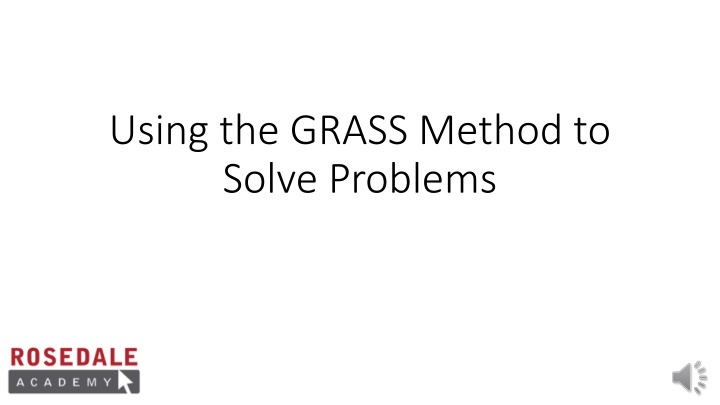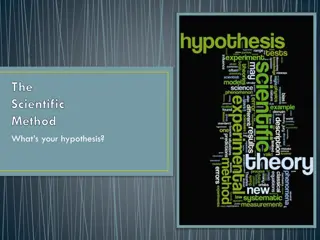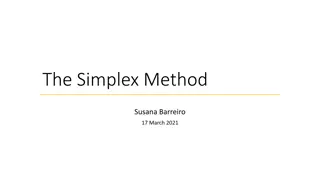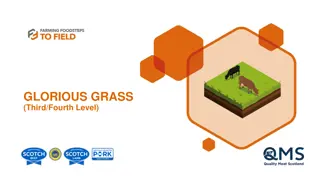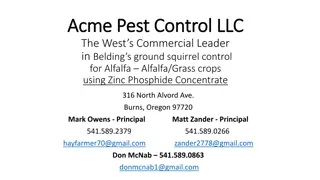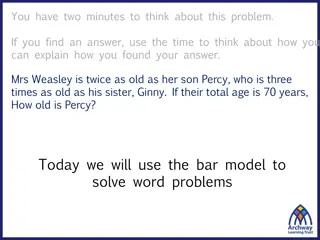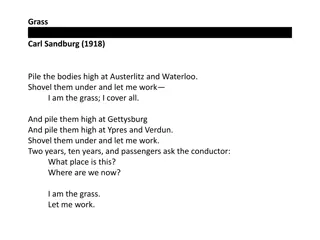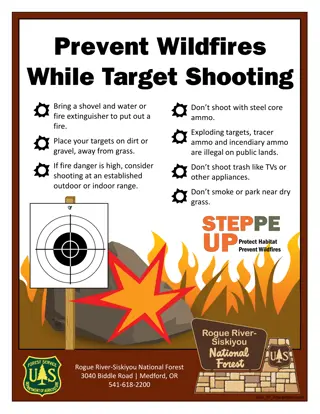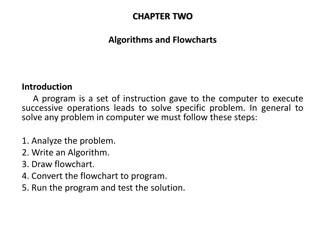Using the GRASS Method to Solve Problems in an Organized Way
An effective organizational tool for students to solve problems systematically. It provides guidelines to organize solutions, uncover relevant information, identify the problem's goal, and choose the appropriate tools for problem-solving. Teachers benefit from the method by ensuring uniform presentation of solutions, understanding students' thought processes, and identifying areas where students may need support. Learn how the GRASS method works and how to apply it to solve problems efficiently.
Download Presentation

Please find below an Image/Link to download the presentation.
The content on the website is provided AS IS for your information and personal use only. It may not be sold, licensed, or shared on other websites without obtaining consent from the author.If you encounter any issues during the download, it is possible that the publisher has removed the file from their server.
You are allowed to download the files provided on this website for personal or commercial use, subject to the condition that they are used lawfully. All files are the property of their respective owners.
The content on the website is provided AS IS for your information and personal use only. It may not be sold, licensed, or shared on other websites without obtaining consent from the author.
E N D
Presentation Transcript
Using the GRASS Method to Solve Problems
What is the GRASS method? The GRASS method is an organizational tool that allows students to solve problems in an organized and logical way.
Why Use the GRASS Method? The GRASS method is useful for both students and teachers. For students, using the GRASS method gives students a set of guidelines that helps: organize their solutions uncover the relevant information in a problem find the ultimate goal of the problem guide students to the proper tools (equations) to use in solving the problem The GRASS method also allows students to clearly demonstrate their understanding of the concepts being assessed.
Why Use the GRASS Method? For teachers, the GRASS method has several benefits: makes sure that all students are presenting their solutions in a uniform format. allows teachers to see the thought process that students are using to solve problems. allows teachers to identify areas where students may be struggling or may need additional support.
Using the GRASS Method Given - identify the information GIVEN in the problem. Required identify the information REQUIRED (what are you trying to determine). Analyze ANALYZE (figure out) which equation, rule or principle applies to this type of problem. Solve if using an equation, substitute the values given in the problem and SOLVE the equation. Statement rewrite your answer as a STATEMENT using a brief sentence that clearly answers the problem.
How to Use the GRASS Method When iron is exposed to air, it corrodes to form red-brown rust. Rust is iron (III) oxide (Fe2O3). How many moles of iron (III) oxide are contained in 92.2g of pure Fe2O3? Round your final answer to three significant digits.
When iron is exposed to air, it corrodes to form red-brown rust. Rust is iron (III) oxide (Fe2O3). How many moles of iron (III) oxide are contained in 92.2g of pure Fe2O3? Round your final answer to three significant digits. Given: Given: Mass Fe2O3 = 92.2g Given Required Analyze Solve Statement
When iron is exposed to air, it corrodes to form red-brown rust. Rust is iron (III) oxide (Fe2O3). How many moles of iron (III) oxide are contained in 92.2g of pure Fe2O3? Round your final answer to three significant digits. Given: Given: Mass Fe2O3 = 92.2g Given Required Analyze Solve Statement Required: Required: n Fe2O3 = ? mol M Fe2O3 = ? g/mol
When iron is exposed to air, it corrodes to form red-brown rust. Rust is iron (III) oxide (Fe2O3). How many moles of iron (III) oxide are contained in 92.2g of pure Fe2O3? Round your final answer to three significant digits. Given: Given: Mass Fe2O3 = 92.2g Given Required Analyze Solve Statement Required: Required: n Fe2O3 = ? mol M Fe2O3 = ? g/mol Analyze: Analyze: n =m M
When iron is exposed to air, it corrodes to form red-brown rust. Rust is iron (III) oxide (Fe2O3). How many moles of iron (III) oxide are contained in 92.2g of pure Fe2O3? Round your final answer to three significant digits. Given: Given: Mass Fe2O3 = 92.2g Given Required Analyze Solve Statement Required: Required: n Fe2O3 = ? mol M Fe2O3 = ? g/mol Analyze: Analyze: n =m M Solve: Solve: M Fe2O3 = 2(55.8g/mol) + 3(16g/mol) = 159.6 g/mol n =m M 92.2g n = 159.6g/mol n = 0.577769 mol Fe2O3 = 0.578 mol round to 3 significant digits
When iron is exposed to air, it corrodes to form red-brown rust. Rust is iron (III) oxide (Fe2O3). How many moles of iron (III) oxide are contained in 92.2g of pure Fe2O3? Round your final answer to three significant digits. Given: Given: Mass Fe2O3 = 92.2g Given Required Analyze Solve Statement Required: Required: n Fe2O3 = ? mol M Fe2O3 = ? g/mol Analyze: Analyze: n =m M Solve: Solve: M Fe2O3 = 2(55.8g/mol) + 3(16g/mol) = 159.6 g/mol n =m M 92.2g n = 159.6g/mol n = 0.577769 mol Fe2O3 = 0.578 mol round to 3 significant digits Statement: Statement: Therefore, there are 0.578 moles of iron (III) oxide contained in 92.2g of pure Fe2O3.
